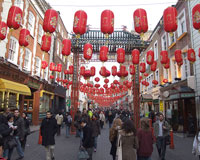 The wall of money waiting to leave China – and other parts of Asia – is colossal, and perhaps underestimated in other parts of the world. From Beijing to Tokyo, Jakarta to Manila, investors are poised.
The wall of money waiting to leave China – and other parts of Asia – is colossal, and perhaps underestimated in other parts of the world. From Beijing to Tokyo, Jakarta to Manila, investors are poised.
And while London is on their shopping list, it isn’t necessarily at the top. Competition to tap into this vast wealth – both public and private – will be intense.
The UK is undoubtedly high on the list for many investors from the region and its well-championed, long-term strengths, including the stability of the legal system, politics and currency, are expected to see this trend increase dramatically in the coming years.
But the US and Australia are pulling in huge swathes of capital from the region too, and there are a multitude of options for intra-Asian investment.
The liquidity and maturity of the Tokyo market, combined with its unrivalled financing options, made it the most desirable city for both investment and development within Asia for Asian investors according to the Urban Land Institute’s latest Emerging Trends report, released last week.
“If you are looking at the value-add sector it has been the best place to buy in the past five years. There are still lots of ways to add value where corporates are trying to sort out their balance sheets and get rid of non-core assets.
“It’s an opaque market, but if you can close you can still get deals that are attractive,” said David Schaefer, head of AEW Asia.
The Sydney, and to a lesser extent Melbourne, residential markets have seen Chinese developers become highly active over the past two years, far eclipsing their presence in London. Investors are drawn to its proximity, weather and the ability to sell the end product back home.
“Wealthy Chinese people want their children to speak English and that is an attraction. There is little jet lag as there isn’t much time difference and the immigration policy is very favourable for China,” says Justina Fan, head of outbound investment Greater China at DTZ Cushman & Wakefield.
The scale of the US market and familiarity with it for Asian investors means it is the country which attracts by far the most capital from the region. From every Asian country other than Taiwan, the US attracted more capital than Europe in the 18 months to June this year, according to JLL and Real Capital Analytics.
“The US is a little more
familiar for the Chinese institutions because of them having been more likely to experience it, and the size and depth of the market means there are a greater number of opportunities at the beginning,” says Bruce Dear, partner at law firm Eversheds, speaking on a panel co-organised by Estates Gazette examining inward investment into the UK at MIPIM Asia.
“China has already acquired $16bn offshore this year, which was split roughly equally between Asia, the UK and the US, but the US is powering ahead and so is Australia as the UK is starting to look toppy,” adds Frank Marriott, senior director and head of real estate capital markets, Asia Pacific, at Savills.
One region that is lagging way behind in attracting real estate capital out of Asia is continental Europe.
This year ULI expects overall Asian flows to Europe to fall by 6%. There is concern over making euro-denominated investments and 80% of Asian investment in Europe is forecast to be in London.
It says this is partly a reflection of the weakening economic outlook in Europe, and partly a realisation that the easy money from European distress has already been made.
So, while the UK is set to remain one of the biggest beneficiaries of capital flows out of China worldwide in the next few years, it will not be without competition.











